Complete Solutions to Multiple Objective Type of chapter SALT ANALYSIS of Class 11 book with complete answers and questions
| Class 11 | CHEMISTRY |
| Chapter | SALT ANALYSIS |
| GRB PUBLICATION | Multiple Objective Type |
| Number Of Questions | 100 |
| Academic Year | 2023-24 |
Which of the following pair (s) of ions would be expected to form precipitate when dilute solutions are mixed?
01:39View SolutionThe carbonate of which of the following cation is soluble in water ?
00:45View SolutionZinc pieces are added to acidified solution of `SO_(3)^(2-)`. Gas liberated can :
01:28View SolutionWhich of the following statements is /are incorrect?
02:45View SolutionWhich of the following reagents can be used for making the distinction between `AgCl` and `Agl` ?
03:22View SolutionWhite precipitate of silver chloride is soluble in:
02:09View SolutionIn which of the following reactions, white precipitate is obtained as one of the reaction products?
01:02View Solution`Cu^(2+)` ions will be reduced to `Cu^(+)` ions by the addition of an aqueous solution of:
02:20View SolutionWhich of the following pairs is not correctly matched
01:50View SolutionWhite precipitate of `Zn(OH)_(2)` dissolves in:
02:15View SolutionSelect the correct statements with respect to the magnanese nitrate solution in water:
03:12View SolutionWhich of the following solutions give white precipitate with `Pb(NO_(3))_(2)` as well as with `Ba(NO_(3))_(2)`?
02:50View Solution`Cu^(2+)` ions give white precipitate with :
01:08View SolutionWhich of the following statements is /are true ?
03:35View Solution`Na_(2)SO_(4)` and `Na_(2)S` can be distinguished from each other by using:
03:38View Solution`KI` solution is the reagent for:
01:42View SolutionWhich of the following cations form(s) black precipitate(s) with `H_(2)S (g)` ?
01:44View SolutionIn II B group of basic-radicals, the yellow precipitate (s) is/are given by:
01:21View SolutionBorax bead test is given by :
01:13View SolutionWhich of the following anion (s) evolve(s) reddish brown gas with concentrated `H_(2)SO_(4)`?
01:54View SolutionConcentrated aqueous ammonia dissolve(s) which of the following completely ?
01:54View Solution`Hg_(2)l_(2)darr ("green") underset("with" H_(2)O) overset("boiled") to` products
Which of the following statement is correct with respect to the products ?01:04View Solution`H_(2)S` will precipitate the sulphide of all the metals from the solution of chlorides of `Cu,Zn` and Cd if:
02:55View SolutionWhich of the following statement(s) is /are false ?
02:28View SolutionWhich of the following compound(s) is/are insoluble in excess aqueous sodium hydroxide?
01:53View SolutionAmmonium molybdate test is used for the estimation of:
02:07View SolutionWhich of the following statement(s) is/are true?
03:27View SolutionWhich of the following is/are correct for potassium ferrocyanide?
02:55View Solution`CoCI_(2)+KNO_(2)+CH_(3)COOH rarr [X] +H_(2)O +KCU + CH_(3)COOK +NO` (Unbalanced equation).
Choose the correct statement about X.03:29View SolutionConsider the reactions shown below:
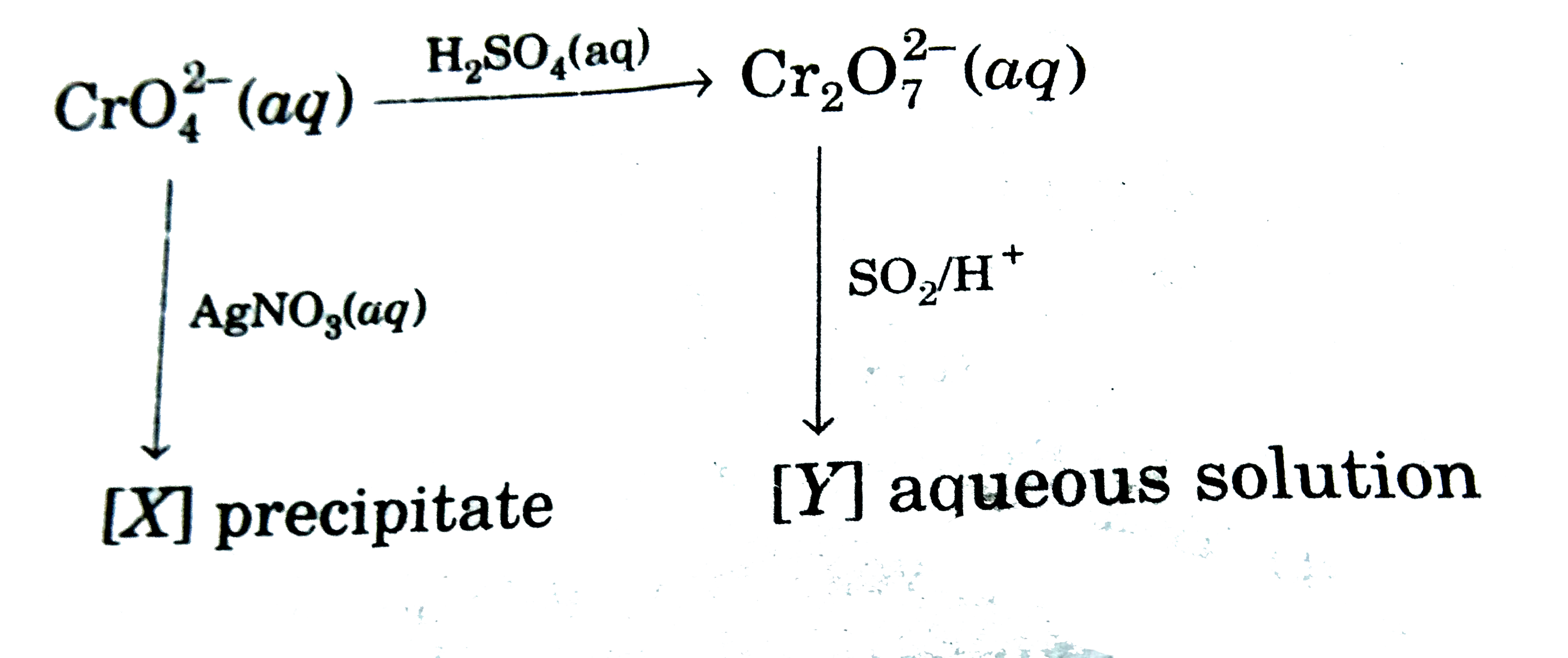
which of the following statement(s) is/are correct?03:44View SolutionA solution of colourless salt H on boiling with excess `NaOH` produces a non-flammable gas. The gas evolution ceases after some time. Upon addition of Zn dust to the same solution, the gas evolution restarts. The colourless salt(s) H is (are):
View SolutionWhich of the following statement(s) is/are correct with respect to bromide ions ?
01:22View SolutionSelect the incorrect statement(s).
03:57View SolutionOriginal solution of salt or mixture should not be prepared in concentrated `HNO_(3)` because it:
View SolutionWhite precipitate of `PbSO_(4)` gets dissolved in:
01:10View SolutionWhat final product(s) is/are formed in the following series of reactions ?
Concentrated borax solution + silver nitrate solution `to` Precipitate `underset("boiling")overset(H_(2)O)to `Produts(final)01:24View SolutionWhich of the following sulphides do not dissolve in `50% HNO_(3)` but dissolve in aqua regia?
02:53View SolutionWhich of the following statement(s) is/are correct?
02:40View SolutionWhich of the following can be used to regulate the concentration of `OH^(-)` ions for the scheme of basic radical analysis (III group)?
02:30View SolutionSelect the correct statement(s).
02:57View SolutionWhich of the following statement(s) is/are not correct?
02:56View SolutionWhich of the following will give the same colour in oxidising flame as well as in the reducing flame in borax bead test (when cold)?
02:25View Solution`Ni +H_(2)SO_(4)` (hot and concentrated) `rarr X(g)`. The liberated gas (select the correct statement):
03:30View Solution`Co^(2+)+KCN` (not in excess) `rarr` Precipitate. Select the correct statement(s) with respect to the precipitate.
01:42View SolutionPotassium ferrocyanide is used for testing :
03:32View SolutionWhich of the following statements is/are correct?
03:53View SolutionWhich of the following imparts green/apple green colour to the Bunsen flame?
01:29View SolutionWhich of the following compound gives X gas with addition of dilute HCI? The gas X when passed into lime water or baryta water, gives turbidity.
01:57View SolutionWhich of the following anion(s) gives white ppt. with `CaCI_(2)` in aqueous solution?
01:00View SolutionWhich of the following acid is/are evolve `CO_(2)` gas from carbonate salt?
01:57View SolutionWhich of the following reagent(s) form ppt. with `Na_(2)CO_(3)`?
01:23View SolutionThe precipitate of `Ag_(2)CO_(3)` dissolve in:
01:16View SolutionWhich of the following interfering radicals form volatile product with conc. `H_(2)SO_(4)`?
01:29View SolutionWhich of the following reagent(s) can show colour change when `SO_(2)` gas is passed through it?
02:30View SolutionWhen `H_(2)S` gas is passed through a hot acidic aqueous solution containing `Cr^(+3), Cd^(+2), Hg^(+2)` and `Co^(+2)`, a precipitate is formed which does not consist of:
02:02View SolutionWhich of the following option is correct regarding borax bead test?
01:40View SolutionWhich of the following reaction are correctly represented against their indicated colour?
02:56View SolutionWhich of the following chemical species is/are diamagnetic as well as coloured?
07:18View SolutionWhich of the following reagent shows visible change when treated with sulphide ion?
02:30View SolutionWhich of the followng process is/are correct?
03:12View SolutionThe addition of a nitric solution to a solution of KI followed by acidification with acetic acid, results in the liberation of iodine, which may be identified by following:
02:03View SolutionThe compounds which on heating produce at least one polymeric product, are:
View SolutionWhich of the following statement is correct?
04:48View SolutionFor the given aqueous reactions, which of the statement(s) is/are true?
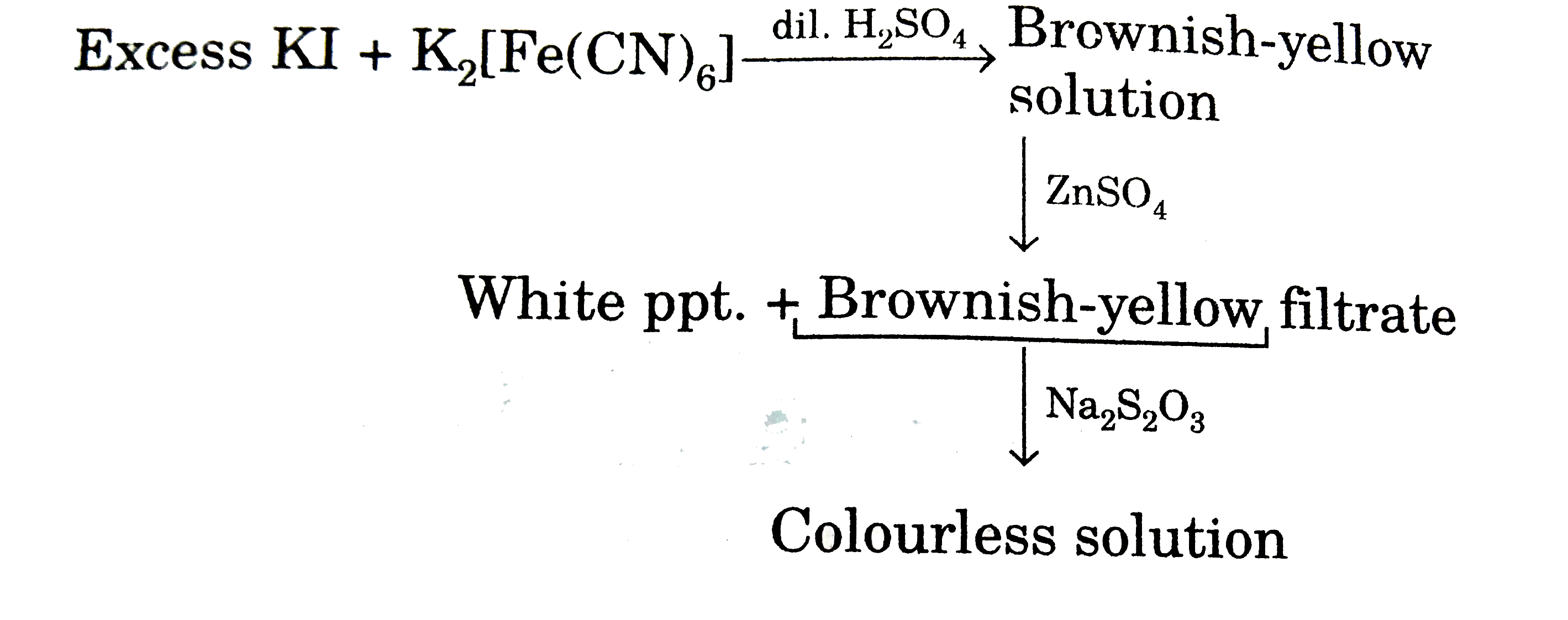 04:26View Solution
04:26View Solution`Na_(2)C_(2)O_(4)+` conc. `H_(2)SO_(4) overset("Warmed")rarr` Gases evolved: Which of the following characteristic(s) is/are correct regarding gases evolved above?
01:58View Solution`KI` solution `+` strach `+` solution of salt `'X' rarr` Deep blye solution 'X' is/are:
03:32View SolutionWhen `AgNO_(3)` reacts with 'X' ion then initially no visible change occurs due to formation of water soluble complex. Then ion 'X' may be:
02:32View SolutionSodium carbonate bead test generally used for...........compounds.
01:45View SolutionWhat are steps to be done before adding group-III reagent into the group-II filtrate?
02:14View Solution`Na_(2)HPO_(4)+` Reagent `'M'rarr` white ppt. The reagent 'M' is:
01:53View SolutionUnknown salt `+` AI-powder `+NaOH` (conc) `rarr` Gas comes out which Nessler's reagent brown. The salt may be:
02:34View Solution`Fe^(3+)` is reduced to `Fe^(3+)` by sing
01:53View SolutionThe reagent(s) that can selectively precipitate `S^(2-)` from a mixture of `S^(2-)` and `SO_(4)^(2-)` in aqueous solution is (are):
View SolutionThe equilibrium
`2Cu^(1) hArr Cu^(0)+Cu^(11)`
in aqueous medium at `25^(@)C` shifts towards the left in the presence of02:27View SolutionWhich of the following metal carbonate will give of metal and oxygen on heating?
View Solution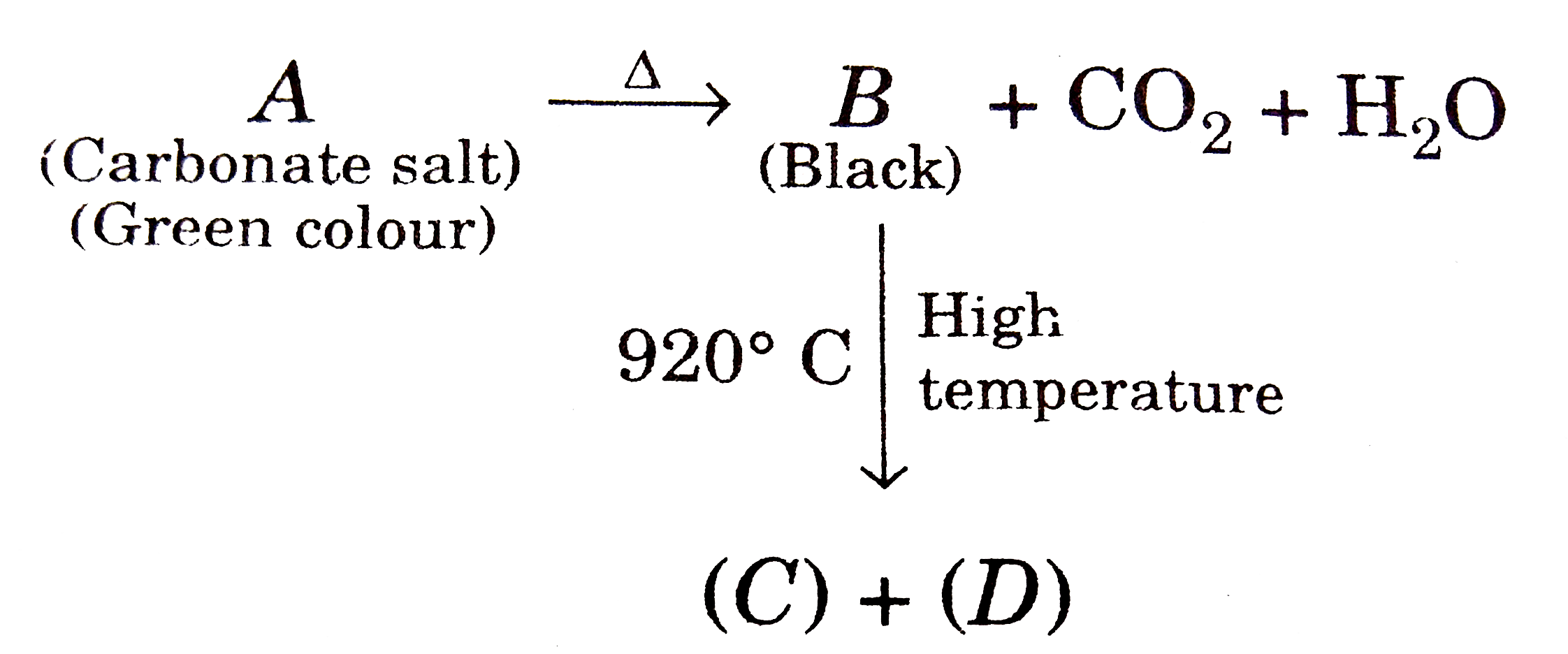
Select the correct statements:View SolutionWhen `Ag_(2)CO_(3)` is heated then product will be:
View SolutionWhen compound A (orange red) is heated then green coloured oxide of (B) is formed and inert gas. (C) is formed then select the correct statements:
View SolutionWhich of the following hydrated salts will not become anhydrous on heating?
View SolutionWhich of the following metal nitrate produce `NO_(2)` on heating?
View SolutionWhich of the following oxides turns yellow on heating and becomes white on cooling?
View SolutionA compound gives 'X' gas on addition of dilute `HCI`. The gas 'X', when passed through lime water or baryta water, gives white turbidity. Identify the compound.
View SolutionWhich of the following anion(s) gives white ppt. with `CaCI_(2)` in aqueous solution?
01:00View SolutionWhich of the following reagent(s) form ppt. with `Na_(2)CO_(3)`?
01:23View SolutionThe precipitate of `Ag_(2)CO_(3)` dissolve in:
01:16View SolutionWhich of the following interfering radicals form volatile product with conc. `H_(2)SO_(4)`?
01:29View SolutionWhen salt solution 'A' is treated with dilute HCI it gives off gas 'B', which when passed through a filter paper, moistened with potassium iodate and starch solution, gives deep blue colouration. 'A' and 'B' respectively are:
View SolutionObserve the following experiment.
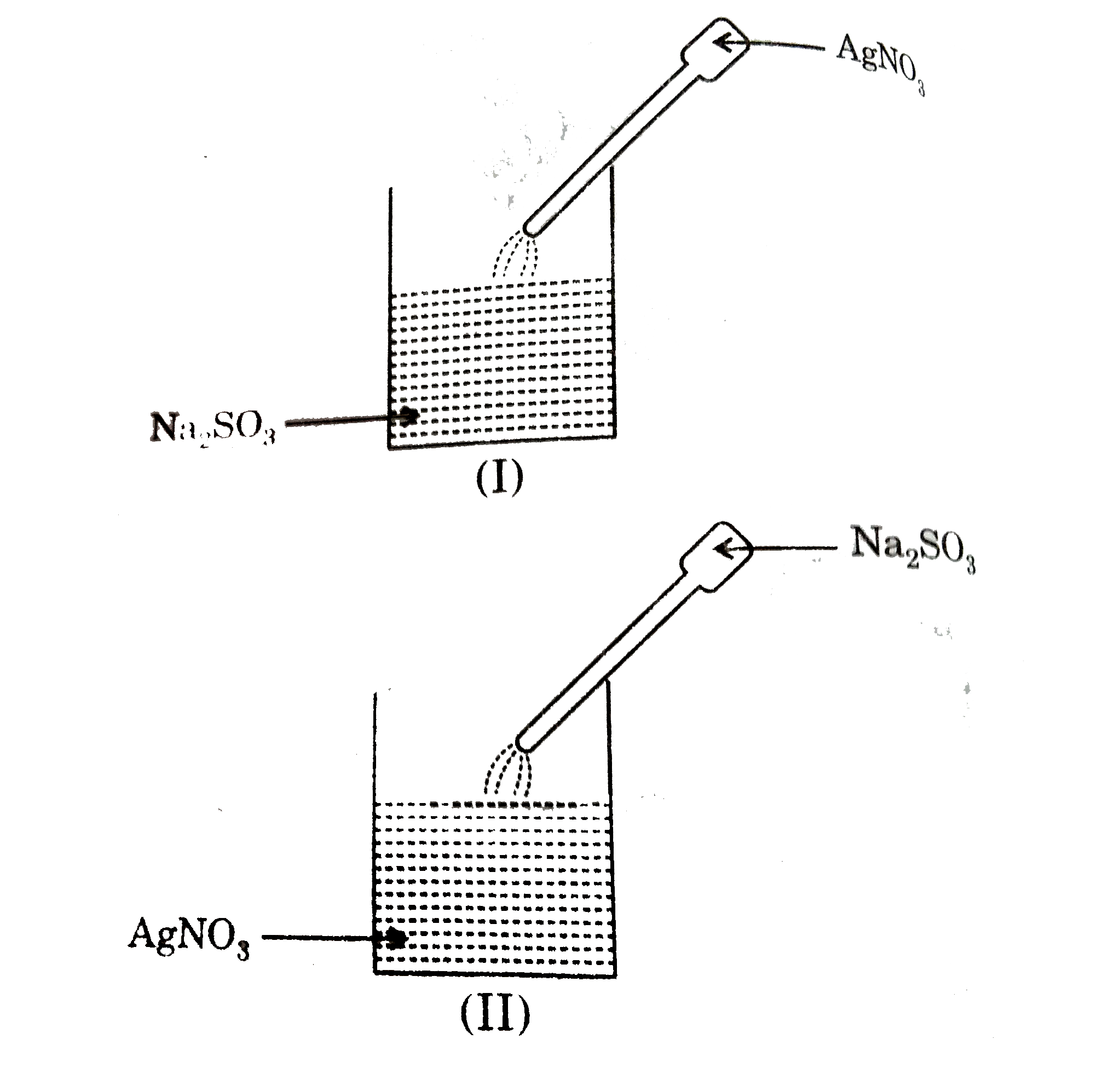
The correct statement about set up (I) and (II) are:View SolutionWhich of the following compound(s) gives green solution, when treated with `K_(2)Cr_(2)O_(7)` and dilute `H_(2)SO_(4)`?
View SolutionWhich of the following compound changes the salmon-coloured precipitate of zinc nitroprusside into red?
View SolutionWhich of the following compounds give precipitate with sulphide solution?
View SolutionWhich of the following reagents (s) is/are required to give water soluble dye stuff, methylene blue in strongly acidic solution with `H_(2)S`?
View SolutionWhich of the following reagents are used to give blue ring test of solution of `Na_(2)S_(2)O_(3)`?
View SolutionWhich of the following statements is/are correct?
View SolutionMethylene blue is an indicator widely used in acid-base titration, it is formed on mixing:
 View Solution
View SolutionSelect the correct statements:
View SolutionWhich of the following combinations shall give rod azo dye with `HNO_(2)`?
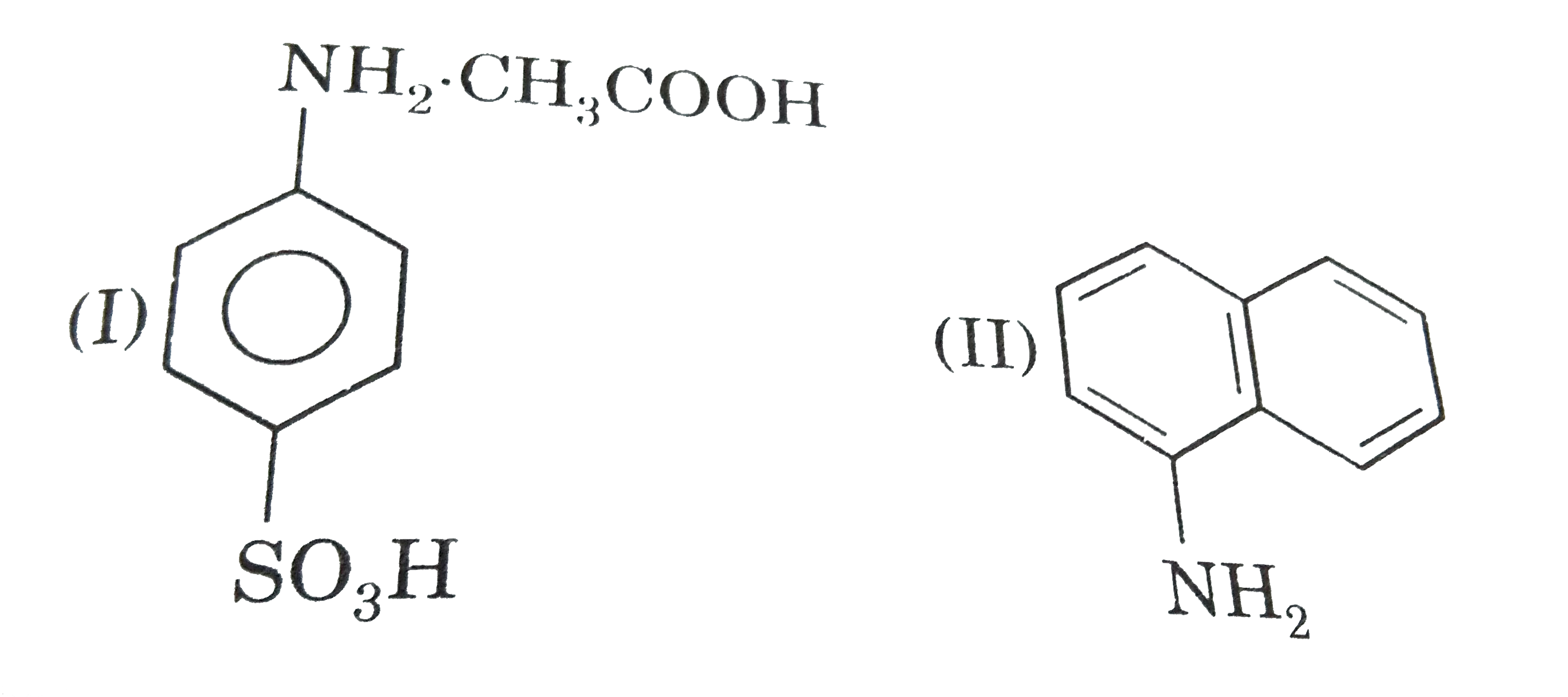
(II) `(KMnO_(4)+dil. H_(2)SO_(4))`
(IV) `(FeSO_(4)+dil. CH_(3)COOH)`View SolutionThe addition of dilute HCI acid to a solid nitric in cold yields a transient, pale-blue liquid is obtaine due to presence to presence of the following compound(s):
View SolutionWhich of the following reagent(s) will be most suitable reagent to remove completely `NO_(2)^(-)` from the mixture of `NO_(2)^(-)` and `NO_(3)^(-)`?
View SolutionWhich of the following reagent(s) make distinction of acetate from oxalates and formates?
View Solution
Multiple Objective Type questions and complete solutions for chapter SALT ANALYSIS of GRB CHEMISTRY (HINGLISH) of Class 11
All Exercises from GRB PUBLICATION Class 11 CHEMISTRY SALT ANALYSIS
- A. Experimental (Laboratory/Apparatus Based)
- B. Dry Tests/Colour/Solubility/Heating Effects
- C.Class- A Subgroup-I-Acidic Radicals
- Comprehension
- Comprehension 1
- Comprehension 10
- Comprehension 11
- Comprehension 12
- Comprehension 13
- Comprehension 14
- Comprehension 15
- Comprehension 16
- Comprehension 17
- Comprehension 18
- Comprehension 19
- Comprehension 2
- Comprehension 20
- Comprehension 21
- Comprehension 22
- Comprehension 23
- Comprehension 24
- Comprehension 25
- Comprehension 26
- Comprehension 27
- Comprehension 28
- Comprehension 29
- Comprehension 3
- Comprehension 30
- Comprehension 31
- Comprehension 32
- Comprehension 33
- Comprehension 34
- Comprehension 35
- Comprehension 36
- Comprehension 37
- Comprehension 38
- Comprehension 39
- Comprehension 4
- Comprehension 40
- Comprehension 41
- Comprehension 42
- Comprehension 43
- Comprehension 44
- Comprehension 45
- Comprehension 46
- Comprehension 47
- Comprehension 48
- Comprehension 49
- Comprehension 5
- Comprehension 50
- Comprehension 51
- Comprehension 52
- Comprehension 53
- Comprehension 54
- Comprehension 55
- Comprehension 56
- Comprehension 57
- Comprehension 58
- Comprehension 59
- Comprehension 6
- Comprehension 7
- Comprehension 8
- Comprehension 9
- D.Class-A Subgroup-II Acidic Radicals
- E.Precipitation/Redox Reacttions
- F.Zero Group Cations
- G: Ist Group Cations
- H: IInd Group Cations
- I. IIIrd Group Cations
- J: IVth Group Cations
- K: Vth and Vth Group Cations
- L: Miscellaneous
- Match The Column Type
- Multiple Objective Type
- Reasoning Type
- Subjective Type
